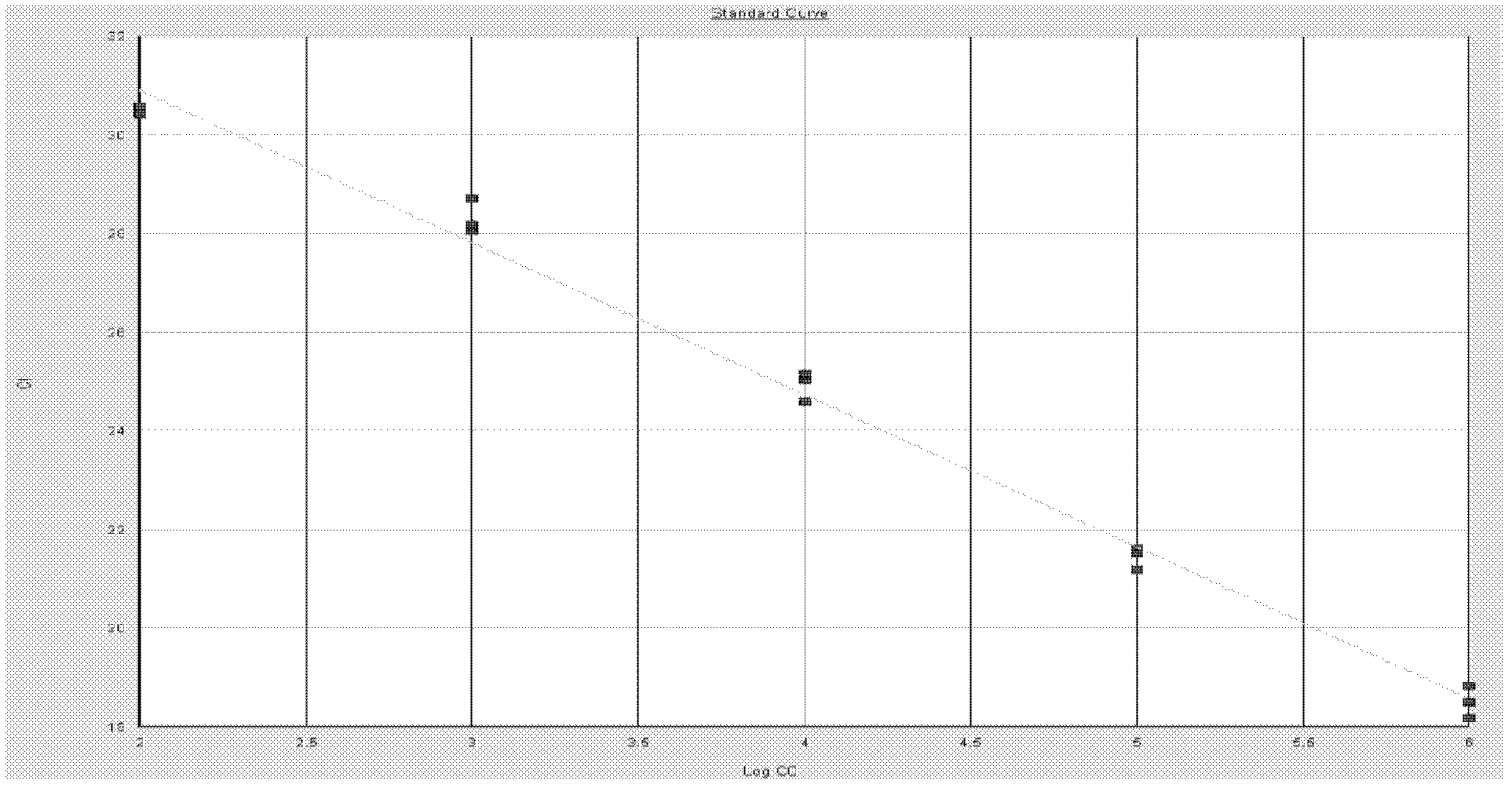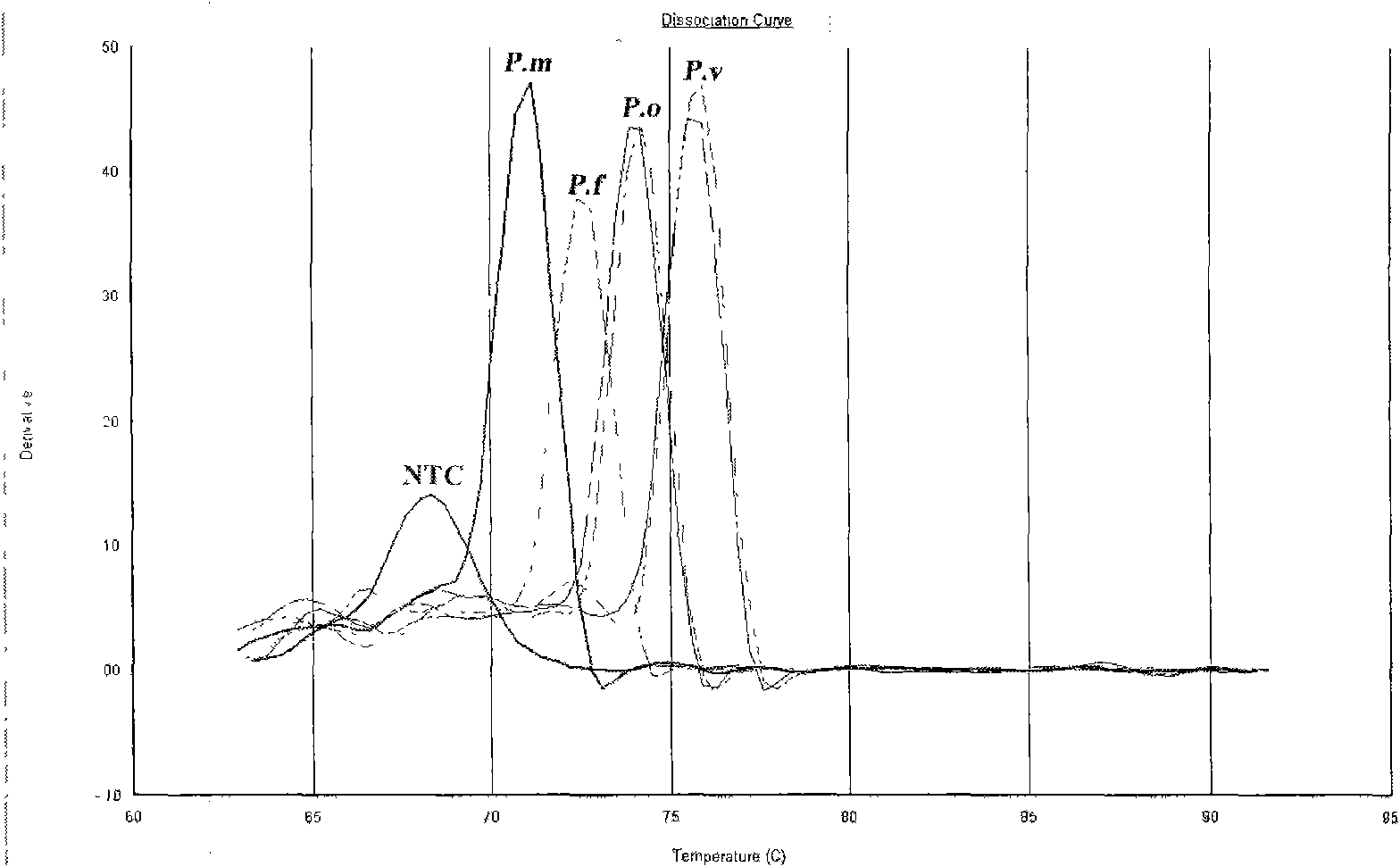Method for detecting and identifying plasmodium sperozoites in mosquito medium
A Plasmodium and identification method technology, applied in biochemical equipment and methods, resistance to vector-borne diseases, measurement/inspection of microorganisms, etc., can solve the problem of high cost of Taqman probes, low cost of Plasmodium sporozoites, inability to carry out parasite detection Specific identification and other issues, to achieve the effect of improving sensitivity and specificity, and low cost
- Summary
- Abstract
- Description
- Claims
- Application Information
AI Technical Summary
Problems solved by technology
Method used
Image
Examples
Embodiment 1
[0040] 1. Design primers:
[0041] According to the sequence characteristics of the 18S small subunit ribosomal rDNA of four human malaria parasites, a pair of primers were designed on the genus-specific regions on both sides of the species-specific region. For sequence comparison, see figure 1 . The primer sequences are as follows:
[0042] 18S-qF: 5'ATAACGAACGAGATCTTAACCT-3'
[0043] 18S-qR: 5'-ATCGTTCCTCTAAAGAAGCTTTA-3'.
[0044] 2. Extraction of Anopheles Plasmodium genomic DNA:
[0045] a) Anopheles cephalothorax is placed in a 1.5ml centrifuge tube;
[0046] b) Add 50 μl 1×PBS to the centrifuge tube described in step a), grind with a glass grinding rod for 5-10 minutes, then add 100 μl Buffer ATL;
[0047] c) Add 20 μl proteinase K to the centrifuge tube described in step b), shake at 56° C. for 3 hours;
[0048] d) Add 200 μl Buffer Al to the centrifuge tube described in step c), vibrate for 15 seconds, and place at 70°C for 10 minutes;
[0049] e) Add 200 μl of...
PUM
 Login to View More
Login to View More Abstract
Description
Claims
Application Information
 Login to View More
Login to View More - R&D
- Intellectual Property
- Life Sciences
- Materials
- Tech Scout
- Unparalleled Data Quality
- Higher Quality Content
- 60% Fewer Hallucinations
Browse by: Latest US Patents, China's latest patents, Technical Efficacy Thesaurus, Application Domain, Technology Topic, Popular Technical Reports.
© 2025 PatSnap. All rights reserved.Legal|Privacy policy|Modern Slavery Act Transparency Statement|Sitemap|About US| Contact US: help@patsnap.com



